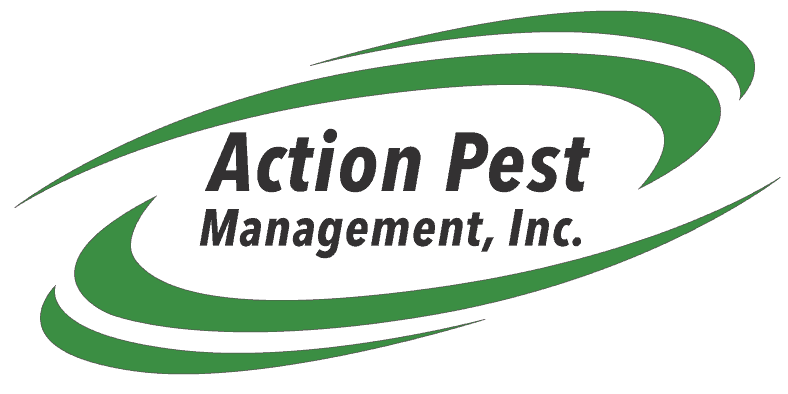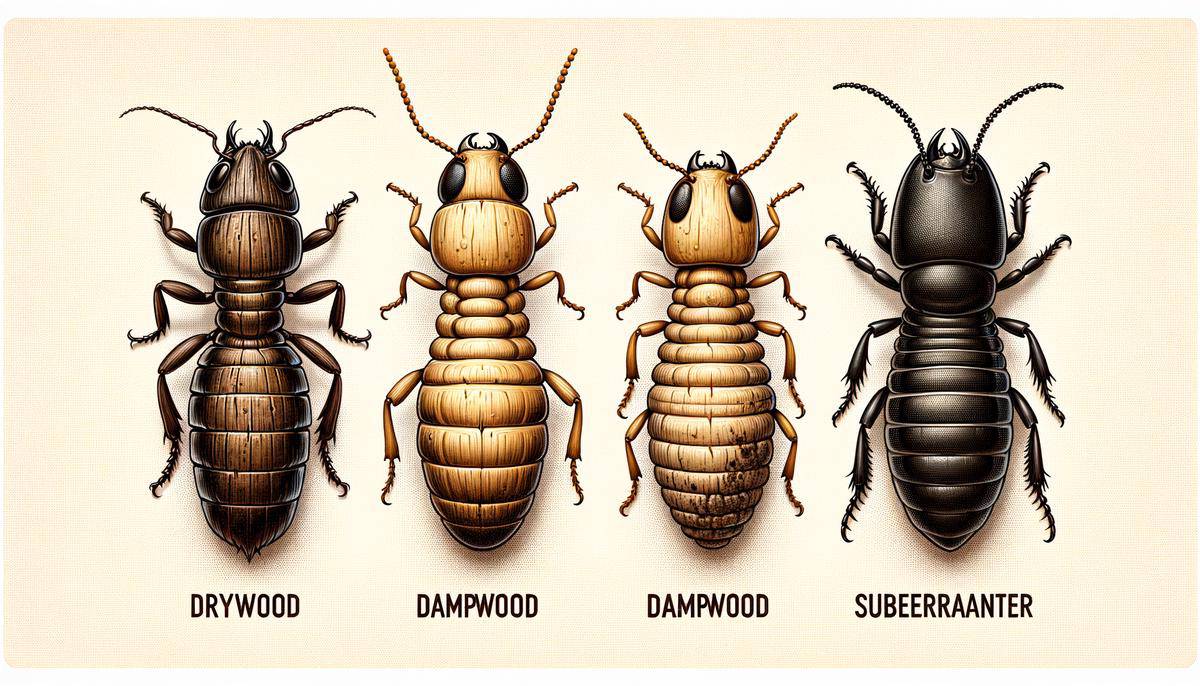
25 Mar Mastering Termite Extermination
Identifying Types of Termites
How to Identify Different Types of Termites in Your Home
Discovering termites in your home can be concerning. Identifying the type of termites you’re dealing with is important to determine the appropriate control strategy. Here’s a guide to help you identify common termite types.
Drywood Termites
Drywood termites infest dry wood, as their name suggests. Unlike other termites, they don’t need moisture from the soil. They are often found in attic wood or wooden furniture.
Signs to Look For:
- Discarded Wings: After swarming, drywood termites discard their wings near windows or doors.
- Termite Droppings: These termites leave behind dry, powdery feces resembling sawdust.
- Wood Damage: Check for smooth, clean galleries within wooden structures. Unlike other termites, drywood termites eat across the wood grain.
Subterranean Termites
Subterranean termites are a common and destructive type. They require moisture and typically build mud tubes to access food sources from their underground colonies.
Signs to Look For:
- Mud Tubes: Look for pencil-sized tubes running from the soil to wood or another cellulose-based material in your home.
- Swarmers: Young winged termites, known as swarmers, are often the first sign of a subterranean termite infestation.
- Wood Damage: Subterranean termites leave wood looking layered, as they preferentially eat softwood.
Formosan Termites
Formosan termites are a type of subterranean termite known for their large colonies. They’re primarily found in the southern United States and can cause significant damage.
Signs to Look For:
- Large Swarmers: Formosan termite swarmers are larger than other termite species and usually swarm in the evening.
- Prominent Mud Tubes: Their mud tubes are larger and more noticeable than those of other subterranean termites.
- Wood Damage: They eat along the grain of the wood, similar to subterranean termites, but can also damage other materials due to the size of their colonies.
Correctly identifying the type of termite is important for determining the appropriate treatment method. Each type has distinct characteristics and behaviors that require specific control strategies. If you’re unsure or need confirmation, it’s advisable to contact a professional pest control service for assistance. They can provide an inspection, accurate identification, and recommend an effective treatment plan for your situation. Early detection and proper identification are essential for protecting your home from termite damage.1
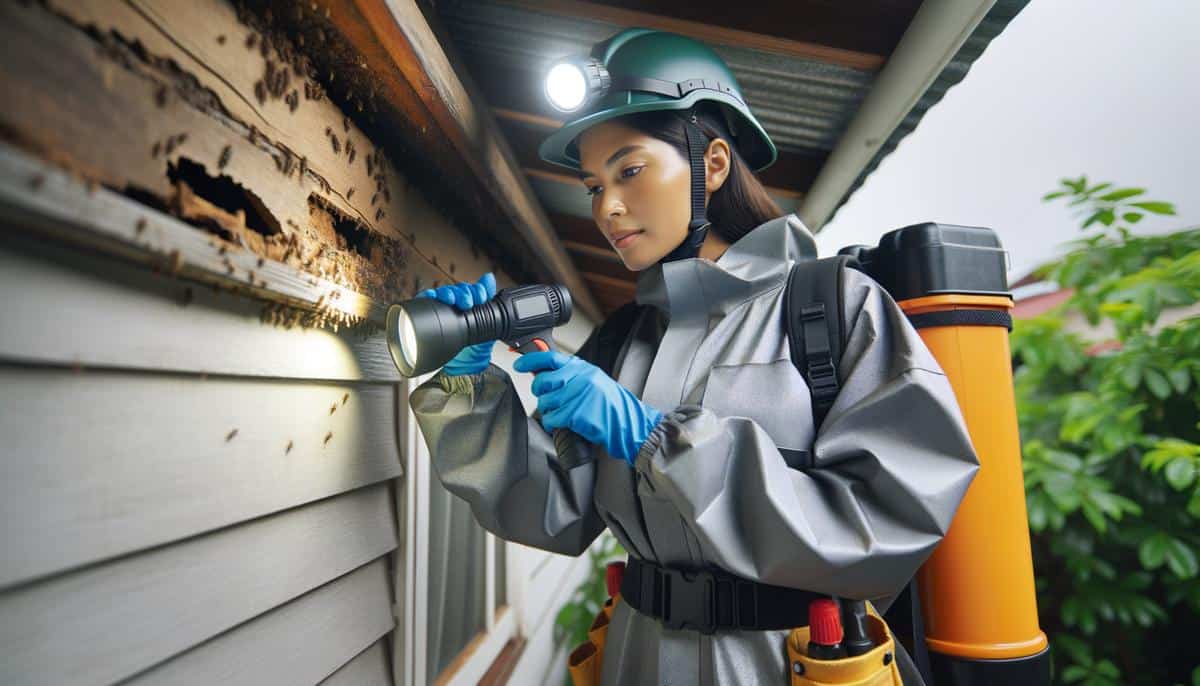
Choosing the Right Treatment Method
Professional Liquid Treatments
Using professional liquid chemicals around your home’s foundation acts as a barrier, discouraging termites from entering. Experts apply this liquid treatment to form a barrier that eliminates termites on contact. It’s a long-lasting solution, which means your home remains protected for several years following application.
Termite Baiting Systems
An environmentally friendly option involves placing bait stations around your home. These baits attract foraging termites, which then carry the poison back to their colony, eventually eliminating the entire population. Although it’s a slower process compared to liquid treatments, baiting is effective over time and less invasive to your property.
Borate Wood Treatment
Treating the wood with borates can prevent termites from infesting your home’s structure. This method involves spraying or brushing borate solution onto wood surfaces, which then soaks in and provides long-term protection against termites. It’s especially useful during the construction phase of homes but can be applied in existing structures as well.2
Fumigation
In cases of severe drywood termite infestations, fumigation may be necessary. This process requires homeowners to vacate their houses for a few days while professionals envelop the structure in a tent and release a gas that penetrates all wood surfaces, killing all termites present. Fumigation is highly effective for widespread termite issues.
Precision Spot Treatments
When termites are localized to specific areas, spot treatments using termiticides or foams directly applied to infested spots can provide quick and effective control. These treatments target termites right where they live and eat, offering a targeted approach to termite management without impacting the whole house.
Each home and termite situation is unique, which means treatment methods should be tailored to match. Working with a trusted pest control service ensures that the appropriate treatment method is chosen and applied safely and effectively. By combining early detection and suitable treatment strategies, you can protect your home against termite damage. It’s wise to act at the first sign of termites to ensure your home remains protected.
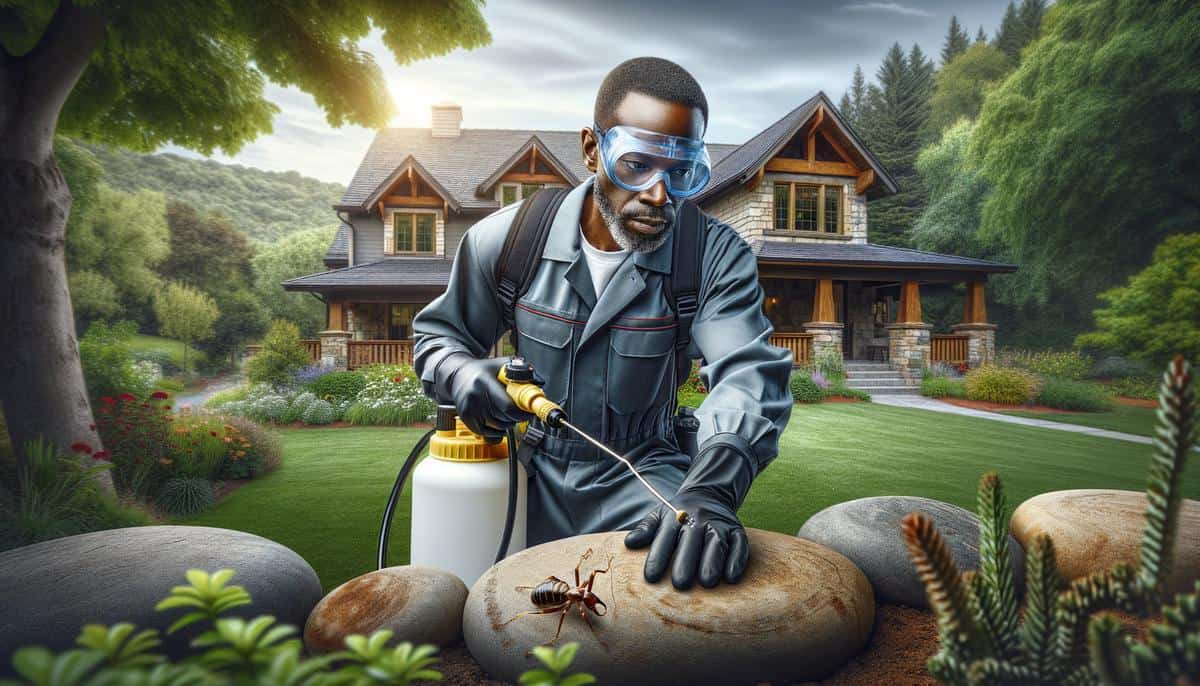
Preventive Measures and Regular Inspections
Why Regular Inspections are Important
Detecting termite presence early can prevent the need for extensive home repairs. Regular inspections are a key defense against termite infestation.
Professionals trained in pest detection have the skills necessary to spot early signs of termite activity, which might go unnoticed. They can identify vulnerabilities in your home’s structure where termites are likely to enter or have already made their way in. By catching termites early, you can reduce the potential for extensive damage, protecting your home.
Preventive Measures to Deter Termites
While regular inspections are valuable, combining them with proactive prevention strategies strengthens your home’s defense against termite infestations. Here’s how:
- Seal Entry Points: Take time to seal cracks in your home’s foundation, gaps around windows and doors, and any other openings that could allow termites to enter.
- Reduce Moisture: Deter termites by fixing leaks promptly, ensuring proper drainage away from your home’s foundation, and using dehumidifiers in damp areas like basements.
- Maintain Distance Between Wood and Soil: Keep a safe distance between soil and any wooden structures or fixtures of your home to discourage termites.
- Clear Debris: Keep your yard clean and free from piles of leaves, wood, and other plant debris to make it less attractive to these pests.
Working with Professionals
By incorporating regular professional inspections with these preventive measures, you create a strong barrier against termite infestations. Experts in pest control bring their knowledge and experience, offering advice suited to your home’s specific needs and vulnerabilities. They can also provide annual treatment plans that act as ongoing protection for your home.
Safeguarding your home from termite damage relies on being proactive with regular inspections and preventive measures. This approach can save you from potential damage and financial strain,3 ensuring that your home remains a termite-free environment. Stay vigilant, work with professionals, and keep those pests at bay.
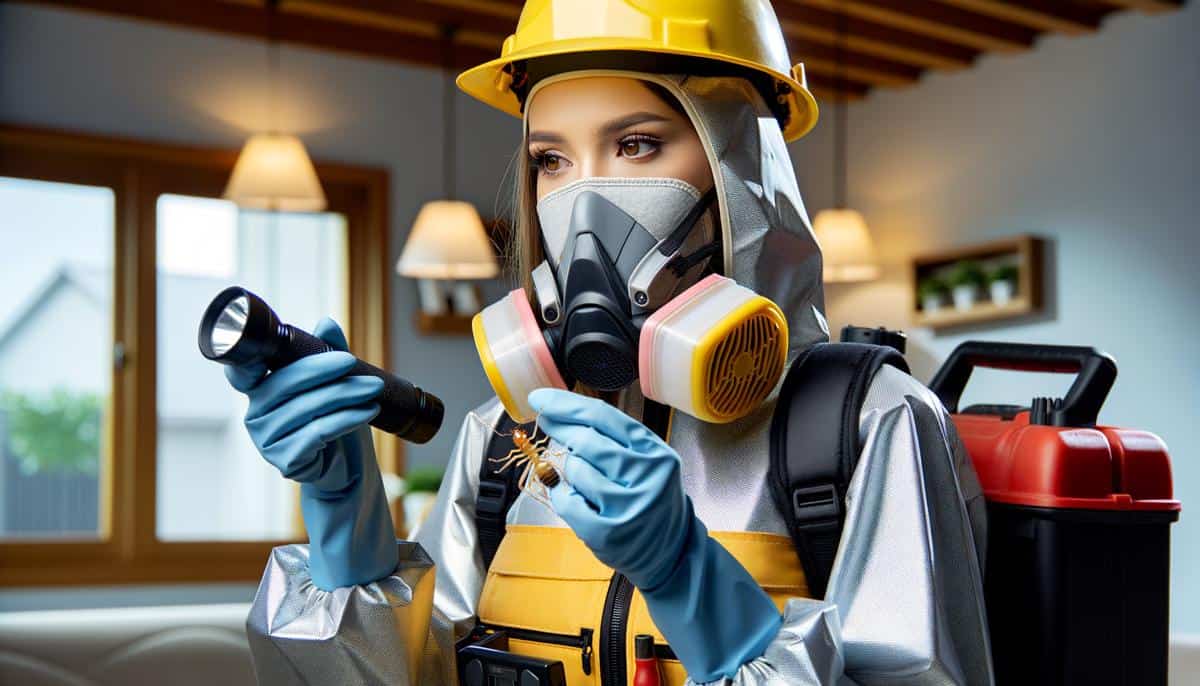
- Scheffrahn RH, Su NY. Asian subterranean termite, Coptotermes gestroi (=havilandi) (Wasmann) (Insecta: Isoptera: Rhinotermitidae). EDIS. 2017;2017(2).
- Freeman MH, McIntyre CR. A comprehensive review of copper-based wood preservatives. Forest products journal. 2008;58(11):6-27.
- Su NY, Scheffrahn RH. Termites as pests of buildings. In Termites: evolution, sociality, symbioses, ecology 2000 (pp. 437-453). Springer, Dordrecht.
